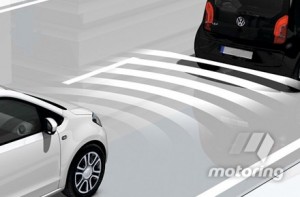With research indicating that a significant percentage of road accidents are attributable to distracted or inattentive drivers, the push is on to develop and refine systems that minimize the risks. At the helm of this push is Autonomous Emergency Braking (AEB).
AEB in essence, is a technological breakthrough that aimed to minimize front-to-rear collisions through its ability to step in automatically and brake the car independently of the driver if a collision was detected as imminent.
Although systems such as driver attention support, lane departure warning and blind spot alert are already working their way into onboard safety systems, it is the proactive nature of AEB that takes it all a step further.

How does it work?
AEB works by scanning the road ahead of the car, and using a radar system to detect objects being approached while in-car computers make continual calculations of the speed and distance of the approach. If AEB calculates a collision is imminent, there is at first an audible signal to alert the driver and then, if no action is taken, the car’s brakes are applied to either avoid a crash completely, or at least minimize the force of actual impact.
Today, there are essentially three levels of AEB. They are summarized below.
Low speed (City).
This is where AEB works at speeds typically below 30km/h. Although it has the potential to eliminate or reduce whiplash-style injuries, has the main benefit of minimizing vehicle damage
High speed (Inter-urban)
Where the radar scans as much as 150 feet ahead of the vehicle at higher speeds, and auto brakes the car.
Pedestrian
Where the system uses radar and cameras to detect pedestrians, animals (and even cyclist via shape recognition) then, if after calculating differential movement and speed determines there’s a danger of impact, brakes the car.
Who’s Backing This Technology?
Volvo brought Autonomous Emergency Braking (AEB) to public attention when it announced its City Safety system at the launch of the XC60 SUV in 2009, but autonomous accident avoidance has really been brewing since Mercedes-Benz introduced automatic braking as part of its radar-based Distronic Plus cruise control system in 2005.
As for authorities, the National Highway Traffic Safety Institute and the Insurance Institute for Highway Safety have already backed the system.
Organizations such as EuroNCAP have publicly embraced AEB, quoting data that suggests that accidents can be reduced by as much as 27 percent in cars using the system.
Read the full article on AEB here.